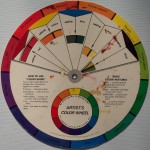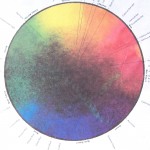Make sure you have a good understanding of how to use color complements to work out a more realistic effect in your paintings. This will create balance in your finished work.

Color complements are opposite of each other on the color wheel. For example, the opposite of yellow is purple. The complement of blue is orange. Refer to the color wheel in the picture.
My advise is to always have one nearby when you are painting. It takes understanding and practice to master, but it is invaluable for the artist; that is, if they want to show or sell their work.
You can use complementary colors to gray down dominant hues that are overwhelming your painting, or highlight and accent certain areas that you feel would give greater balance to your work.
When I paint using only the basic colors (warm and cool hues of red, yellow, and blue, plus black and white), I like to use this version of the Munsell Color Wheel.

I find it necessary to dig in deep to find my color complement and this wheel does the job for me. I usually decide on the color mix I wish to use in the painting and create a value scale for each color and their complement. I keep notes along the value scale so I don’t forget how to mix the colors for my palette.
